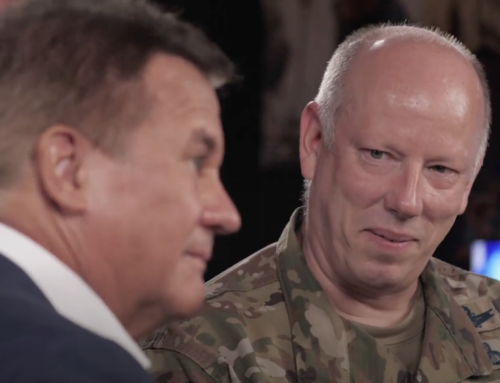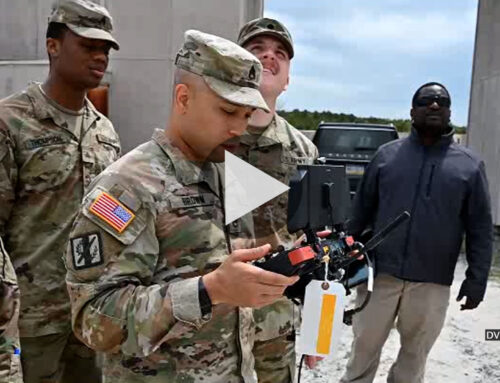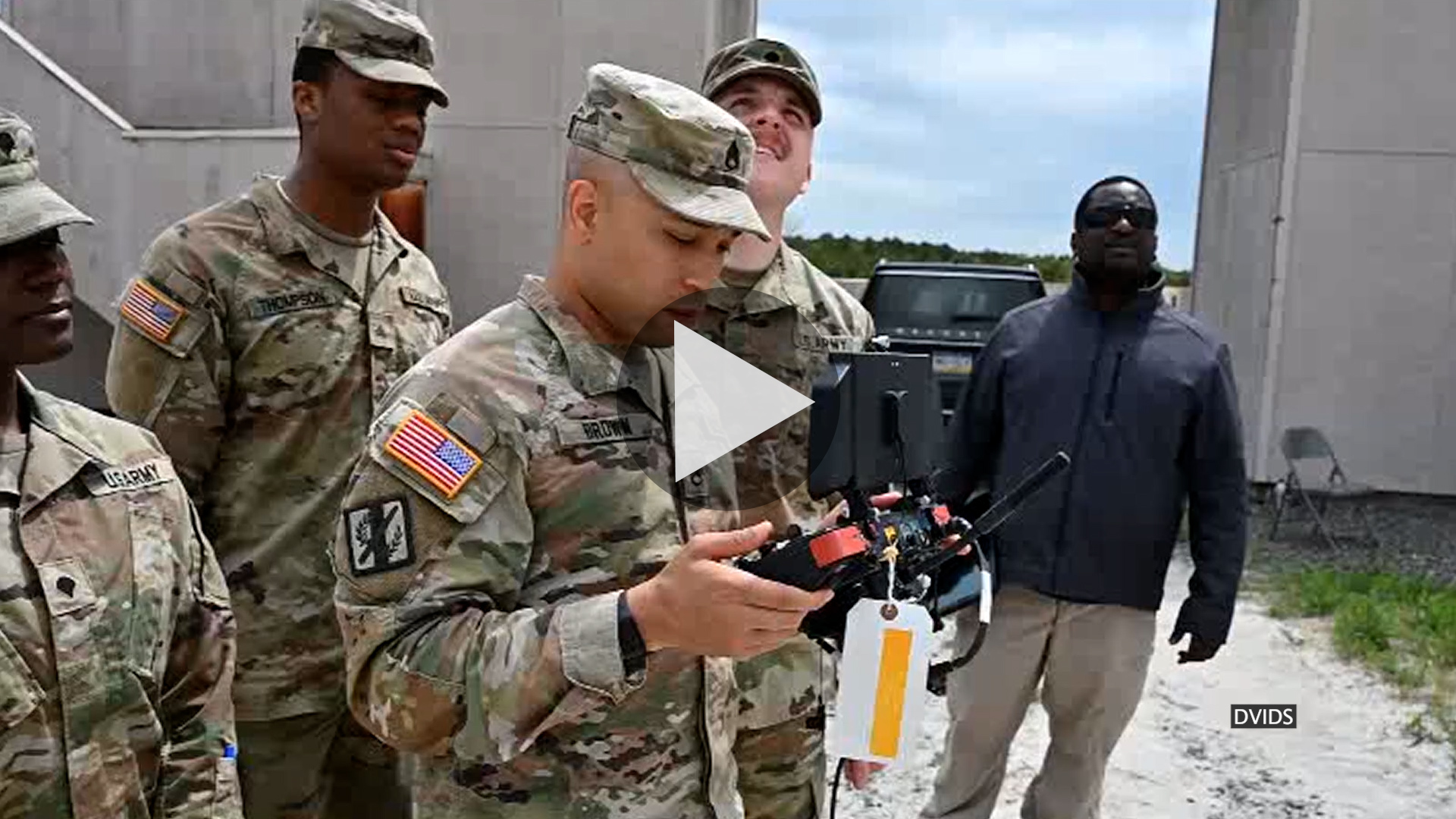Creative image showing a military drone flying over enemy tanks. (Getty creative/R type)
WASHINGTON — The US Army is sourcing the marketplace for companies that can produce a large drone to scan the skies and attack targets with the new, developmental munitions — a requirement that, on paper, seemingly could help fill a gap created by a recent service aviation shakeup.
The service released a request of information on Thursday for a group 4 or 5 unmanned aircraft system (UAS) — meaning drones weighing more than 1,320 pounds — able to host multiple payloads on longer- range missions. Potential contenders should be able to fly 500 nautical miles at 20,000 feet up in the air, but higher than 30,000 feet is preferable, and built for short takeoff and landing.
“This UAS will be required to execute various missions such as reconnaissance, surveillance, security, attack, precision strike, intelligence collection, and command and control (C2) support in large-scale combat operations,” the Army wrote.
Although the service is still in the planning stages for acquiring such an aircraft, and may not move forward with doing so, the idea is to outfit the large bird with “advanced” sensor technologies like electro-optical/infrared/laser designators, synthetic aperture radar/moving target indicators, intelligence and electronic warfare.
The UAS will also need to be able to fire precision guided munitions, launched effects (LE) UAS, and other emerging capabilities.
“To address the challenges across different domains, this UAS will need to leverage on-board, long-range sensing capabilities to maintain appropriate standoff from short- and mid-range integrated air defense systems threats,” the service wrote. “When operating in conjunction with manned systems, this UAS would enhance the Army’s ability to gather accurate and timely information, intelligence, and significantly reduce the time required to deliver both lethal and non-lethal effects.”
Industry has until July 7 to respond to the Army’s request, and the service said it is open to a range of options, including a full-developmental effort.
The Army did not immediately respond to Breaking Defense’s questions about this new drone effort and if it is designed to help fill a capability gap created with the cancellation of Future Attack Reconnaissance Aircraft (FARA) program.
However, JJ Gertler, a senior analyst with the Teal Group, said that while the request could kick off a legitimate hunt for a new drone, it could also just be the first step to acquiring additional MQ-1C Gray Eagles.
“If the Army was looking to buy more Gray Eagles, which are class four, they would put out an RFI like this just to make sure there wasn’t some competitive system they were missing, and to check off the ‘competition’ box,” he wrote in an email to Breaking Defense. “So yes, they might be looking for something new — but it’s about an even chance that they’re just hoping to buy more of what they already have.
General Atomics has been positioning a future version of its MQ-1C Gray Eagle combat drone as a potential alternative to the Army’s now-canceled FARA effort and company spokesman C. Mark Brinkley pointed towards a lot of “interesting details” in the new request.
“It’s great to see the Army potentially embracing a short takeoff and landing [STOL] capability, and the ability to operate from remote and nontraditional runways,” he wrote in a short statement to Breaking Defense. “This is very much in line with our own thinking on Gray Eagle STOL, and the various STOL demonstrations we’ve been doing from dirt roads and in distances as short as 300 feet.”
This year has been a year of change for its aviation roadmap. It started in February with that FARA cancellation announcement and the decision to phase out smaller sized RQ-7 Shadow and RQ-11 Raven UAS fleets.
“We are learning from the battlefield — especially Ukraine — that aerial reconnaissance has fundamentally changed,” Army Chief Gen. Randy George said in a press release at that time. “Sensors and weapons mounted on a variety of unmanned systems and in space are more ubiquitous, further reaching and more inexpensive than ever before.”
Speaking to a small group of reporters ahead of the formal announcement, Army Futures Command Gen. James Rainey said that despite the FARA decision, the requirement to conduct reconnaissance and security remains.
“It’s not going anywhere,” the four-star general said.
“The requirement to be able to conduct reconnaissance and security is still absolutely valid,” he later added. “Just how to do it, and how much risk to accept [and] … the future is going to be about who can properly integrate humans and machines effectively.”











